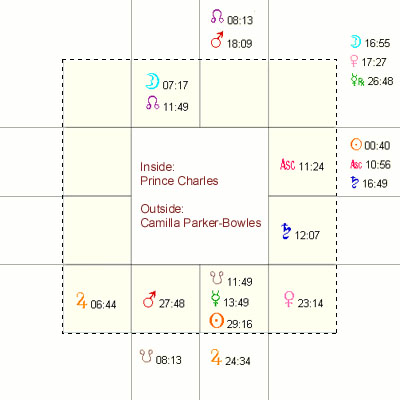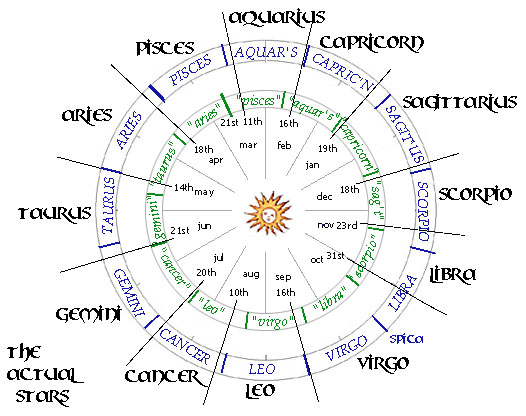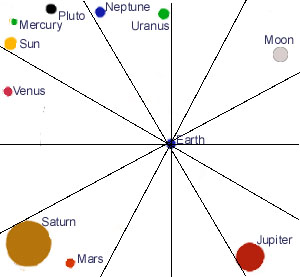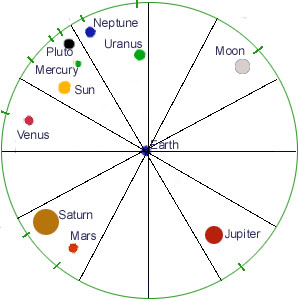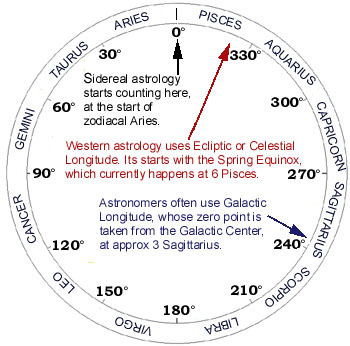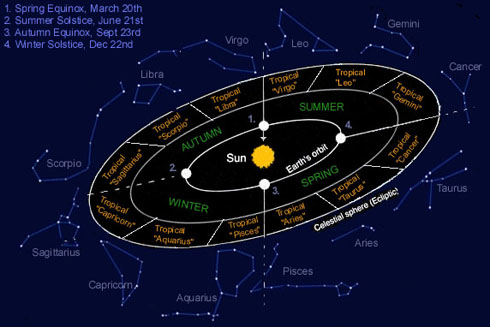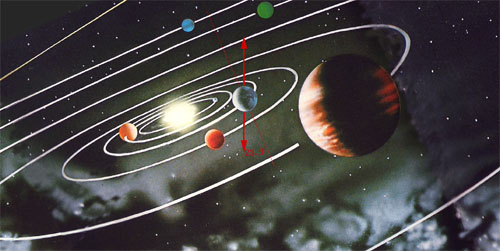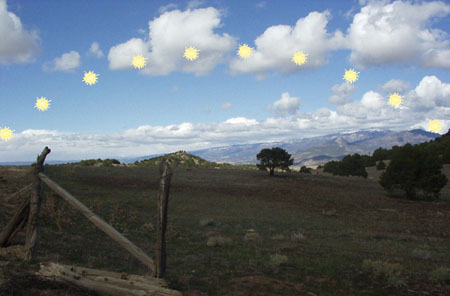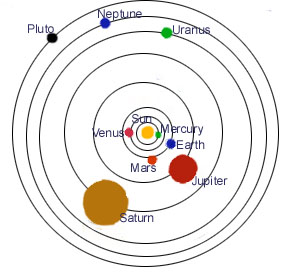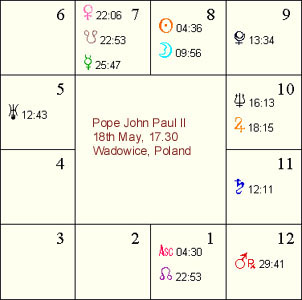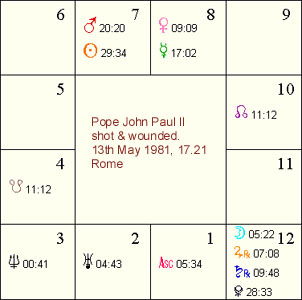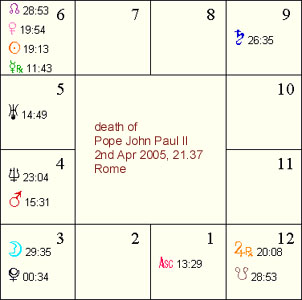Astrology & Evolution
For heavenly bodies to be able to affect us, there must some way in which they hook into our physiology. How and why did our physiology evolve that way? Various people have considered ‘how’ – a mechanism by which astrological influence might work, but I’m not aware of anyone addressing the evolutionary question of ‘why’.
What I mean by this is, if you believe there’s a natural biological (probably bioenergetic) mechanism causing humans to be affected by the planets or stars, then the question arises of why we evolved that way. What advantage is it to the human species to incorporate the influence of the stars?
In this post I make 2 suggestions:
1. there must be an evolutionary advantage to susceptibility to heavenly influences,
2. offer a theory as to what that evolutionary advantage is.
These are separate issues: you might agree with 1 but have a different theory as to why.
Note: I am not an evolutionary biologist so my speculations are only those of a moderately well-informed layman.
Evolutionary Fitness
In strict Darwinian terms the question is: what survival benefit would it be to a group or species to be subject to astrological influence? For astrology to work, humans (and possibly other species) must have evolved biological mechanisms which translate heavenly influences into impulses or behaviour. Any such effect uses energy which could otherwise be spent finding food, seeking a mate etc and so must have a corresponding benefit or would likely have disappeared due to natural selection favoring individuals less subject to astrological influence.
If, as I suspect, the trait is very old and developed as humans (or mammalian species in general) evolved we may need to consider why the trait might have evolved in the first place and why it has persisted or is “evolutionarily conserved”.
Why Traits Evolve
The most direct evolutionary reason for a trait within a species is that bearing it may increase an individual’s chances of offspring. For instance, peacocks with long beautiful tails are preferred by peahens and thus have a better chance of reproducing, so those males within the species who have better tails have a reproductive advantage.
In species where males fight to mate or own a harem the mechanism is clear: the strongest males reproduce, the weaker ones don’t. The stronger males leave more offspring. This benefits the species as a whole, although it does not make all the contestants happy: competition ensures a few winners and a whole bunch of losers.
Certain traits such as altruism fly in the face of expectation and there is lively debate about why they exist. For instance, in wolves only the dominant alpha pair breed and other group members help nursemaid the pups and hunt for them. On the face of it, this is evolutionary suicide for non-alpha individuals because losers in the reproduction stakes are helping the winners. This altruistic behaviour must persist either because it helps their future individual reproductive chances, or improves the group’s chance of passing on their genes.
Astrological Fitness & Side-Effects
With astrological influence we should see an effect which benefits the fitness of the species or group, but which may create losers and winners.
There might also be side-effects. For example, if some particular astrological trait was beneficial for reproductive success, the mechanism by which it worked might carry along a susceptibility to other astrological traits neutral to reproductive success. For example, susceptibility to influence by the Moon and Mars might have direct reproductive benefits, but the mechanism also causes the side-effect of being susceptible to Mercury and Saturn, which may not. In fact I suspect this is the case. As long as the mechanism as a whole has a net effect this is not a problem.
Why? Genetic Fitness
My theory is that astrological influence increases genetic mixing. It is a mechanism to prevent gene pools getting stagnant and forcing periodic exogamy. This improves genetic fitness.
In the Nature & Nuture post I suggested that astrological influence is the third leg of the stool – it balances and counteracts effects of nature (genetics) and nuture (family and group influence). Nature and nuture seem to me to at least partially create a movement towards endogamy, or mating within the group. Marrying relatives passes on more genes like your own (nature), and cultures are notoriously intolerant of other groups. Astrological influence throws a wrench into the tendency towards stagnation causing people to be attracted to mate with other people further from the group center. Thus it brings fresh genes into the group and improves the gene pool.
Dangers of inbreeding
Americans notoriously move around and meet new people and so may not appreciate the dangers of inbreeding. But throughout history humans have mostly been less mobile or lived in smaller groups than today. Paleolithic peoples (hunter-gatherers) were mobile but in small groups; neolithic peoples (farmers) tended to be static. Many peoples also needed to defend themselves from neighbors, so the dangers of inbreeding and a restricted gene pool could be quite real.
There have been many examples of a cultural tendency to intermarry closely to preserve property and family line, in same cases to the point of introducting physical defects, eg the pharoahs (as we now know from DNA studies of Tutankhamen’s family). Many societies eventually came to understand dangers of close inbreeding and prohibted marriage within certain degrees of consanguinity. Anthropology knows this issue as Endogamy (marriage within the group) and Exogamy (marriage outside it).
Requisite Astrological Markers
Astrology does contain the necessary markers for this effect. That is, astrologers can recognize certain chart configurations both individually and between two people as affecting relationships – including romance and passion, long-term partnerships, and having children.
Humans now have successful birth control techniques but this is of relatively recent origin, so gene mixing probably evolved chiefly based on attracting two unlikely people to mate and assuming children may follow. Long-term relationships offer a better chance for offspring to mature, so configuations for a persistant relationship may also be relevant.
Astrologers will already have recognised some of these configurations: for example, Mars-Venus conjunctions between two charts for sexual passion; Sun-Moon, Jupiter-Sun or Moon for marriages. Vedic astrologers will also recognise the obsessive and “fated” quality of Rahu & Ketu conjunctions with another persons Venus or Mars.
An effect capable of breaking someone out of the genetic trap of a small group must provide strong impulse towards a different mate, even to the point of going against all social mores and causing rigid disapproval. So passionate obsessive relationships are probably part of this effect. At the extreme end of this spectrum we may see relationships considered not only scandalous but unethical.
Why does Astrological Influence do this better than anything else?
We don’t strictly have to answer this question because if astrological influence achieves it successfully it will be conserved as a trait unless a better mechanism arises. However there are clear advantages to the mechanism anyway. One huge advantage of celestial mechanisms is they run like clockwork for a very long time and affect people everywhere, thus having a scattershot worldwide effect. Because the planets go regularly about their business, all possible combinations will happen and be distributed randomly among the population. If you wanted to randomize genetic mixing it is hard to think of a better way to do it.
Follow-on posts address further questions such as how this mechanism might have arisen and how we see it at work in astrological charts.

